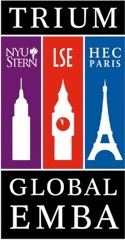Tuesday
Nov252008
Wal-Mart, Scott, Duke. Time to get excited?
 Tuesday, November 25, 2008 at 10:02AM
Tuesday, November 25, 2008 at 10:02AM I've written and taught a lot about Wal-Mart's missteps in its globalization strategies, looking particularly hard at the situation in Germany, which yielded to a perfect confluence of a Porter Five Forces analysis and my five forces of customer experience analysis. (For more info on the Five Forces of CEM, contact me.)
But Germany wasn't the only market that Wal-Mart was drummed out of. Asia - including Japan - has been hard to the company. But wait -- Germany and Japan, why should they be such a big challenge? They're developed economies with good GDP and a sizeable number of people who want to save money on a range of products. How on earth could Wal-Mart mess that up?
Nevertheless, clearly Wal-Mart must have a globalization strategy. They need it for the long haul. And the new guy in charge of Wal-Mart, Mike Duke, managed their globalization efforts. His next big foray?
Australia.
Now, this makes some sense, if you look at all the available research on consumer buying styles (which, frankly, Wal-Mart appears not to have done in Japan and Germany). Australia and the US are pretty darn close on their consumer style preferences. And, because such preferences factor heavily in my five forces of CEM, Wal-Mart might seem to be on track.
Except.
One of the things Wal-Mart will have to figure out is how to maintain enough profit in their global operations factoring in global macroeconomic changes bound to be coming down the pike. Currency exchange rates and cost of capital will become a huge part of financial and growth projections and planning, and I believe a huge component of Wal-Mart's risk going into Australia.
And, I have no particular information to indicate how Wal-Mart's brand will be accepted in Australia. One of the challenges I've faced as a global customer management consultant is determining the extent to which global communications affects brand perception. This is a counter-balance to highly localized strategies that focus on local knowledge of a company's value prop. So, for example, the "China" strategy for Wal-Mart would have to be quite different on the east coast as it would be for the interior. Buying styles, consumer perceptions and values, pricing and assortment -- all will vary. And many consumer expectations about a good value prop will be influenced in subtle ways by information they get about companies via the Internet (directly or indirectly).
So, now that Wal-Mart has developed a brand of its own -- and by this, I mean a blend of the brand it intends and the brand as perceived by its publics -- how will Australia process this brand position? Is Australia's consumer base posing another unknown market risk to Wal-Mart?
I saw a marketing report released on the Internet from an anti-Wal-Mart group, and from what I read, Wal-Mart's market data is so gingerly presented, so heavily filtered by pro-Wal-Mart language, that Mike Duke's first order of business is to get to the truth of the matter.
Mike Duke has got his work cut out for him. A potentially low-margin play Down Under in a risky economic environment, with potentially huge game-shaping unknowns about how its brand is perceived in Oz ... and elsewhere.




Reader Comments (2)
Dear Paul, i'm curious about your five forces of CEM.
Please let me know.
thanx.
best regards,
vince
(levranceconsulting@gmail.com)
I've got a chart and lots of text on this, but in a nutshell, the five forces are:
1. The tastes, values, styles and aspirations of the customer.
2. The opinions of people whom the customer trusts.
3. Data independent of opinion or the marketing communications function of the company in question.
4. The "brand" of the company, as expressed in value, values, differentiation relative to others, etc. This is the expression of the company in their corporate social responsibility and traditional integrated strategic marketing.
5. The actual behaviors and messages delivered during the customer's experience with the company.